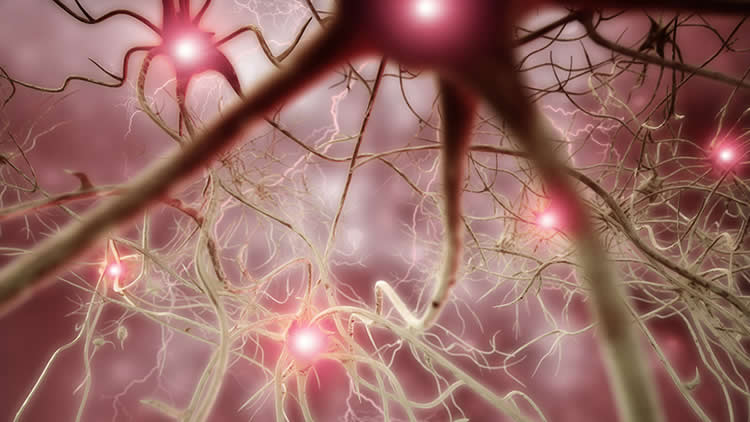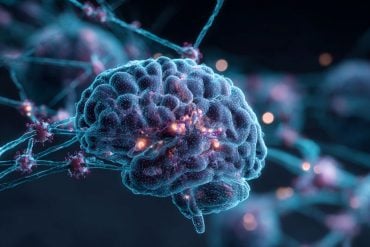Summary: University of Michigan researchers report hyperreactive brain networks may play a role in hypersensitivity associated with fibromyalgia.
Source: University of Michigan.
New research reports that hyperreactive brain networks could play a part in the hypersensitivity of fibromyalgia.
A new study finds that patients with fibromyalgia have brain networks primed for rapid, global responses to minor changes. This abnormal hypersensitivity, called explosive synchronization (ES), can be seen in other network phenomena across nature.
Researchers from the University of Michigan and Pohang University of Science and Technology in South Korea report evidence of ES in the brains of people with fibromyalgia, a condition characterized by widespread, chronic pain. The paper, published in Scientific Reports, details only the second study of ES in human brain data.
“For the first time, this research shows that the hypersensitivity experienced by chronic pain patients may result from hypersensitive brain networks,” says co-senior author Richard Harris, Ph.D., associate professor of anesthesiology at Michigan Medicine with the Chronic Pain and Fatigue Research Center. “The subjects had conditions similar to other networks that undergo explosive synchronization.”
In ES, a small stimulus can lead to a dramatic synchronized reaction in the network, as can happen with a power grid failure (that rapidly turns things off) or a seizure (that rapidly turns things on). This phenomenon was, until recently, studied in physics rather than medicine. Researchers say it’s a promising avenue to explore in the continued quest to determine how a person develops fibromyalgia.
“As opposed to the normal process of gradually linking up different centers in the brain after a stimulus, chronic pain patients have conditions that predispose them to linking up in an abrupt, explosive manner,” says first author UnCheol Lee, Ph.D., a physicist and assistant professor of anesthesiology at Michigan Medicine. These conditions are similar to other networks that undergo ES, including power grids, Lee says.
‘Electrically unstable’ findings
The researchers recorded electrical activity in the brains of 10 female participants with fibromyalgia. Baseline EEG results showed hypersensitive and unstable brain networks, Harris says. Importantly, there was a strong correlation between the degree of ES conditions and the self-reported intensity of chronic pain reported by the patients at the time of EEG testing.
Lee’s research team and collaborators in South Korea then used computer models of brain activity to compare stimulus responses of fibromyalgia patients to the normal condition. As expected, the fibromyalgia model was more sensitive to electrical stimulation than the model without ES characteristics, Harris says.
“We again see the chronic pain brain is electrically unstable and sensitive,” Harris says.

He says this type of modeling could help guide future treatments for fibromyalgia. Since ES can be modeled essentially outside of the brain or in a computer, researchers can exhaustively test for influential regions that transform a hypersensitive network into a more stable one. These regions could then be targeted in living humans using noninvasive brain modulation therapies.
George Mashour, M.D., Ph.D., co-senior author and professor of anesthesiology at Michigan Medicine, says, “This study represents an exciting collaboration of physicists, neuroscientists and anesthesiologists. The network-based approach, which can combine individual patient brain data and computer simulation, heralds the possibility of a personalized approach to chronic pain treatment.”
Funding: Cerephex Corporation, James S. McDonnell Foundation, National Institutes of Health funded this research.
Source: Haley Otman – University of Michigan
Publisher: Organized by NeuroscienceNews.com.
Image Source: NeuroscienceNews.com image is adapted from the University of Michigan news release.
Original Research: Full open access research for “Functional Brain Network Mechanism of Hypersensitivity in Chronic Pain” by UnCheol Lee, Minkyung Kim, KyoungEun Lee, Chelsea M. Kaplan, Daniel J. Clauw, Seunghwan Kim, George A. Mashour & Richard E. Harris in Scientific Reports. Published online December 1 2017 doi:10.1038/s41598-017-18657-4
[cbtabs][cbtab title=”MLA”]University of Michigan “Does an Exploding Brain Network Cause Chronic Pain?.” NeuroscienceNews. NeuroscienceNews, 12 January 2018.
<https://neurosciencenews.com/chronic-pain-exploding-brain-8304/>.[/cbtab][cbtab title=”APA”]University of Michigan (2018, January 12). Does an Exploding Brain Network Cause Chronic Pain?. NeuroscienceNews. Retrieved January 12, 2018 from https://neurosciencenews.com/chronic-pain-exploding-brain-8304/[/cbtab][cbtab title=”Chicago”]University of Michigan “Does an Exploding Brain Network Cause Chronic Pain?.” https://neurosciencenews.com/chronic-pain-exploding-brain-8304/ (accessed January 12, 2018).[/cbtab][/cbtabs]
Abstract
Functional Brain Network Mechanism of Hypersensitivity in Chronic Pain
Fibromyalgia (FM) is a chronic widespread pain condition characterized by augmented multi-modal sensory sensitivity. Although the mechanisms underlying this sensitivity are thought to involve an imbalance in excitatory and inhibitory activity throughout the brain, the underlying neural network properties associated with hypersensitivity to pain stimuli are largely unknown. In network science, explosive synchronization (ES) was introduced as a mechanism of hypersensitivity in diverse biological and physical systems that display explosive and global propagations with small perturbations. We hypothesized that ES may also be a mechanism of the hypersensitivity in FM brains. To test this hypothesis, we analyzed resting state electroencephalogram (EEG) of 10 FM patients. First, we examined theoretically well-known ES conditions within functional brain networks reconstructed from EEG, then tested whether a brain network model with ES conditions identified in the EEG data is sensitive to an external perturbation. We demonstrate for the first time that the FM brain displays characteristics of ES conditions, and that these factors significantly correlate with chronic pain intensity. The simulation data support the conclusion that networks with ES conditions are more sensitive to perturbation compared to non-ES network. The model and empirical data analysis provide convergent evidence that ES may be a network mechanism of FM hypersensitivity.
“Functional Brain Network Mechanism of Hypersensitivity in Chronic Pain” by UnCheol Lee, Minkyung Kim, KyoungEun Lee, Chelsea M. Kaplan, Daniel J. Clauw, Seunghwan Kim, George A. Mashour & Richard E. Harris in Scientific Reports. Published online December 1 2017 doi:10.1038/s41598-017-18657-4






